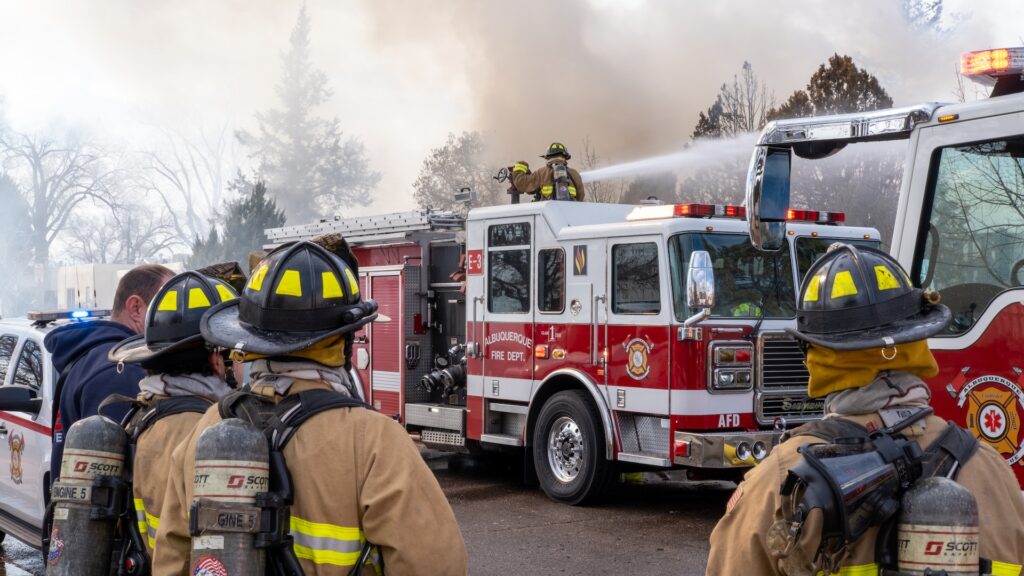
Fire is a powerful and unpredictable force of nature that, when uncontrolled, can lead to devastating consequences. Fires can break out anywhere and at any time, and their effects are often sudden and severe. To protect lives, property, and our communities, fire safety is paramount. In this 1000-word article, we will explore the importance of fire safety, the principles of prevention and preparedness, and practical steps individuals and communities can take to minimize the risk of fire-related disasters.
Understanding the Importance of Fire Safety:
Fire safety is not just a matter of common sense; it’s a fundamental aspect of life that we often take for granted until an emergency occurs. Fire incidents can result in injury, loss of life, property damage, and emotional trauma. Furthermore, fires can have far-reaching consequences for the environment, causing pollution and damage to ecosystems.
Incorporating fire safety into our daily lives, workplaces, and communities is essential. By doing so, we can reduce the risk of fires, mitigate their impact when they occur, and ensure the safety and well-being of our loved ones and neighbors.
Principles of Fire Safety:
Fire safety encompasses a set of principles designed to prevent fires and minimize their impact when they do happen. These principles include:
- Prevention: The most effective way to deal with fires is to prevent them from happening in the first place. This involves identifying potential fire hazards and taking steps to eliminate or mitigate them. Prevention measures range from simple practices like proper disposal of cigarette butts to more complex strategies such as fire-resistant building materials.
- Preparedness: Despite our best efforts, fires can still occur. Preparedness is about being ready for the unexpected. This includes having fire safety equipment in place, knowing how to use it, and having an emergency plan in case of a fire. The goal is to ensure that people can evacuate quickly and safely.
- Response: If a fire does break out, a swift and coordinated response is crucial. This involves notifying emergency services, evacuating, and using firefighting equipment if it’s safe to do so. Effective response can save lives and reduce property damage.
- Recovery: After a fire, the process of recovery begins. This involves assessing the damage, rebuilding if necessary, and providing support to those affected by the fire. Recovery efforts help communities bounce back and return to normalcy.
Fire Prevention Measures:
Fire prevention is the first line of defense in fire safety. Here are some key fire prevention measures for individuals and communities:
- Smoke Alarms: Install smoke alarms in every room of your home and ensure they are in good working condition. Test them regularly and replace the batteries as needed.
- Fire Extinguishers: Keep fire extinguishers in easily accessible locations in your home, especially in the kitchen and near fire-prone areas. Learn how to use them properly.
- Fire-Resistant Building Materials: When constructing or renovating buildings, use fire-resistant materials for walls, roofs, and floors. This helps slow the spread of fires.
- Electrical Safety: Regularly inspect electrical wiring, outlets, and appliances for signs of wear and tear. Avoid overloading circuits and use surge protectors.
- Smoking Safety: If you smoke, do so in designated areas and properly dispose of cigarette butts in non-flammable containers.
- Cooking Safety: When cooking, never leave stovetops unattended, and keep flammable materials away from heat sources. Install a range hood with a fire suppression system if possible.
- Safe Storage: Store flammable materials, such as gasoline and propane, in well-ventilated, cool areas away from your home. Follow safety guidelines for storage.
- Clearing Brush and Debris: Maintain a defensible space around your property by clearing brush and debris that could serve as fuel for a fire. Trim trees and shrubs to create a fire break.
Fire Preparedness:
Fire preparedness is about having a plan in place in case a fire occurs. Here are some key steps to enhance fire preparedness:
- Emergency Evacuation Plan: Develop an emergency evacuation plan for your home, workplace, and community. Ensure that all family members or colleagues are familiar with the plan.
- Emergency Contacts: Keep a list of emergency contacts, including local fire departments and authorities. Make sure everyone knows how to call for help in case of a fire.
- Fire Drills: Conduct fire drills regularly in your home and workplace. Practice evacuating quickly and safely. These drills help build muscle memory for effective responses.
- Emergency Supplies: Maintain an emergency kit that includes essential supplies like first aid items, flashlights, non-perishable food, and water. Ensure that this kit is easily accessible.
- Fireproof Safes: Store important documents and valuables in fireproof safes. This protects them from fire damage and ensures you have critical information at hand after the fire.
- Insurance: Ensure that you have adequate insurance coverage for your property. Review your policy to understand what is covered in the event of a fire.
Fire Response:
When a fire occurs, a calm and coordinated response can make a significant difference. Here are key steps to follow during a fire:
- Notify Authorities: Call emergency services immediately by dialing 911. Provide accurate information about the fire’s location and any potential hazards.
- Evacuate Safely: If you are not trained to combat fires, your priority should be to evacuate safely. Follow your evacuation plan and stay low to avoid smoke inhalation.
- Fire Extinguishers: If a small fire has just started and it’s safe to do so, attempt to extinguish it using a fire extinguisher. Remember the PASS (Pull, Aim, Squeeze, Sweep) technique.
- Use Fire Blankets: In the event of a kitchen fire, consider using a fire blanket to smother the flames by wrapping it around the fire source. This can be more effective than using water.
- Stay Informed: Listen to local news and authorities for updates on the fire situation, evacuation orders, and safety instructions.
Recovery and Support:
After a fire, the process of recovery begins. This phase is crucial for individuals and communities affected by the disaster. Here are some key aspects of recovery:
- Assessment: Evaluate the damage to your property and assess what can be salvaged and what needs to be rebuilt. Document the damage for insurance claims.
- Rebuilding: Begin the process of rebuilding your home or business. This may involve hiring contractors, obtaining permits, and securing the necessary resources.
- Emotional Support: Seek emotional support if you or your loved ones have been traumatized by the fire. Support groups, counseling, and therapy can be beneficial.
- Community Assistance: Many communities and organizations offer support and resources to those affected by fires. Reach out for assistance as needed.
- Insurance Claims: Work closely with your insurance company to process your claim and recover the costs associated with property damage and loss.
Community Fire Safety:
Fire safety extends beyond individual efforts. Communities play a vital role in minimizing the risk of fires. Here’s how communities can enhance fire safety:
- Fire Departments: Support your local fire department through donations, volunteering, or community engagement. They play a crucial role in firefighting and fire prevention.
- Community Education: Organize fire safety workshops, drills, and awareness campaigns to educate residents about the importance of fire safety.
- Defensible Spaces: Create and maintain defensible spaces in your community by clearing brush and vegetation that could serve as fuel for fires.
- Building Codes: Enforce and update building codes that promote fire-resistant construction and design.
- Community Planning: Develop comprehensive community evacuation plans and establish designated meeting points during emergencies.
- Emergency Services: Ensure that your community has well-equipped emergency services, including fire departments, to respond to fire incidents swiftly and effectively.
Fire safety is a shared responsibility that begins with individual awareness and action and extends to community-wide initiatives. It is crucial to recognize that fires are not a matter of “if” but “when.” By embracing fire safety principles, taking proactive prevention measures, and being prepared for emergencies, we can significantly reduce the risk of fire-related disasters, protect lives, and safeguard our communities. Fire safety is not an option; it is an imperative that we must all prioritize to ensure the safety and well-being of ourselves and those around us.
